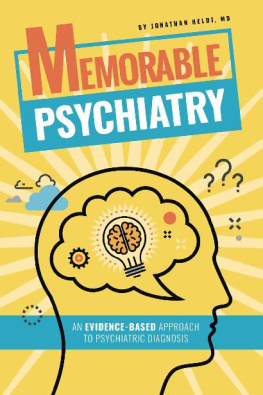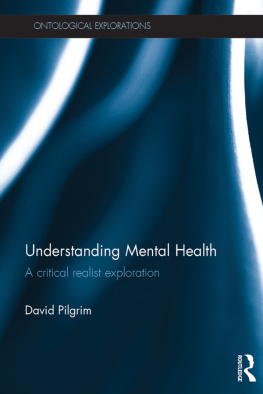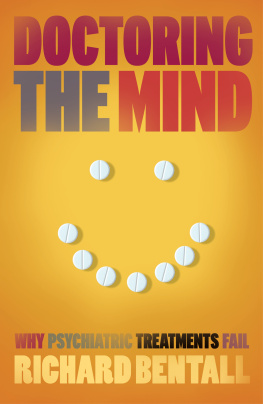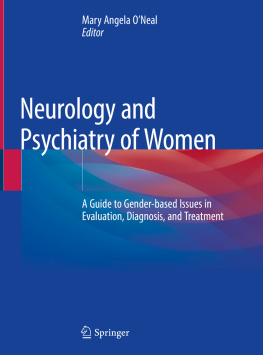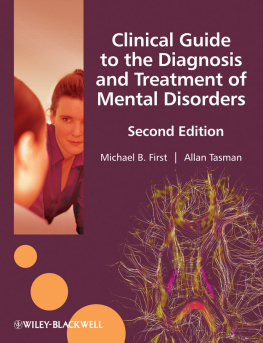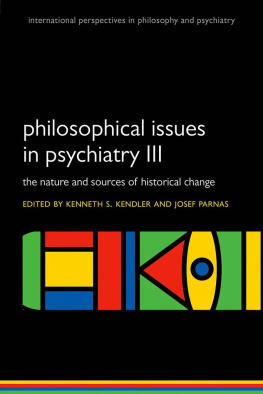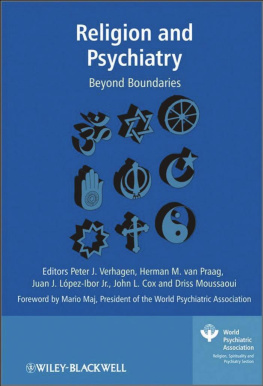MAD
SCIENCE
MAD
SCIENCE
Psychiatric Coercion, Diagnosis, and Drugs
Stuart A. Kirk,
Tomi Gomory,
& David Cohen

Transaction Publishers
New Brunswick (U.S.A.) and London (U.K.)
Copyright 2013 by Transaction Publishers, New Brunswick, New Jersey.
All rights reserved under International and Pan-American Copyright Conventions. No part of this book may be reproduced or transmitted in any form or by any means, electronic or mechanical, including photocopy, recording, or any information storage and retrieval system, without prior permission in writing from the publisher. All inquiries should be addressed to Transaction Publishers, RutgersThe State University of New Jersey, 35 Berrue Circle, Piscataway, New Jersey 08854-8042. www.transactionpub.com
This book is printed on acid-free paper that meets the American National Standard for Permanence of Paper for Printed Library Materials.
Library of Congress Catalog Number: 2012035176
ISBN: 978-1-4128-4976-0
Printed in the United States of America
Library of Congress Cataloging-in-Publication Data
Kirk, Stuart A., 1945-
Mad science : psychiatric coercion, diagnosis, and drugs / Stuart A. Kirk, Tomi Gomory, and David Cohen.
p. ; cm.
Includes bibliographical references and index.
ISBN 978-1-4128-4976-0 (alk. paper)
I. Gomory, Tomi. II. Cohen, David, 1954- III. Title.
[DNLM: 1. Diagnostic and statistical manual of mental disorders. 2. Mental Disorders--history--United States. 3. Mental Disorders--drug therapy--United States. 4. Psychiatry--history--United States. WM 11 AA1]
616.89075--dc23
2012035176
Contents
Over the last fifty years in the United States, there has been a massive expansion of the psychiatric enterprise. According to one source (Frank & Glied, 2006), the principal group of mental health professionals in 1950 used to be made up of about seven thousand psychiatrists. Today, using US Department of Labor (2012) figures and selecting professions with the terms psychiatric, mental health, substance abuse, as well as clinical psychologists and mental health and substance abuse social workers, we have an army of at least six hundred thousand mental health professionals. By adding psychiatric nurses and a number of other counseling and therapeutic occupations and their supporting staff, such as medical records keepers and various mental health technicians, the number would easily top one million. Not surprisingly, the amount spent on what are called mental health services has also exploded, from about $1 billion in 1956 (Frank & Glied, 2006) to $113 billion today (Garfield, 2011).
The people who are the target of these servicesthose from infancy to senescence who are considered mentally ill, who consider themselves mentally ill, and who are encouraged to seek mental health servicesis at an all-time high. According to the latest American Psychiatric Association methods of diagnosing mental illness, nearly one hundred million people, 25 to 30 percent of the US population, have a mental illness during any one year (Frank & Glied, 2006, pp. 1011), and half of the population will have a mental illness during their lifetime. This massive expansion of recognized illness, professional manpower, and services was accompanied by the rise of state and federally funded programs that provide most funding for mental health services. A growing number of private health insurance policies also provide psychiatric coverage. Surrounding this expansion is the pharmaceutical industry, which has immersed the entire mental health service system in a tidal wave of prescription psychoactive drugs, oxygenated by multibillion-dollar lucre, most of it also paid for by public funds.
Many psychiatric authorities claim that these developments are signs of major medical progress: the growing humanitarianism of an enlightened society caring for those in need; the advances in methods of accurately identifying and diagnosing all those suffering from psychiatric illness; and the scientific breakthroughs in understanding and treating mental illness biochemically.
If this grand explanation of progress was accurate, then the following should also be true. There would be less mental illness in America now than in 1950. Those with mental illness would be much more likely to recover with treatment than before. Those who are now called the severely mentally ill, who formerly would have been involuntarily committed to state asylums, would now be more effectively and humanely treated. The use of coercion as a psychiatric intervention would be a method of the distant past. The techniques of diagnosing mental illness would be more accurate, and valid, than methods used previously. Diagnosis would rest on biological markers rather than conversation as the biological basis of the currently more than three hundred types of mental illnesses would have been substantiated or disconfirmed. As a result, the remaining actual bodily illnesses formerly called mental illnesses or mental disorders would be the concern of medical specialties such as neurology or endocrinology. We would have confirmed methods of preventing and curing these illness that could be employed by any mental health practitioner. With at least one in four American women and one in seven American men today receiving psychoactive drugs by prescription, there would be solid evidence that these drugs effectively treat the problems for which the Food and Drug Administration approves them.
If you believe that even one of the above signs of progress has occurred, the review and analysis presented in Mad Science will be eye-opening, if not disturbing. None of these confirming developments has occurred. Of course, many in the public and in the mental health professions think that major advances in diagnosis and treatments of mental disorders have occurred and are continually occurring. Agencies such as the National Institute of Mental Health and organizations such as the American Psychiatric Association regularly tout such advances, which are then widely echoed by the media. Many, perhaps a majority of adults today, believe that the problem of mental illness is fundamentally a medical problem whose solution lies, through conventional medical research, in identifying its causes and devising effective treatments (e.g., targeting brains and genes). Most people view modern drug treatments as an undisputed improvement (more effective and safer) over any previous interventions designed for those considered mentally ill. Moreover, many people believe (or perhaps merely hope) that those labeled severely mentally illand those who treat themnow operate in an atmosphere of cooperation without the use coercion.
In this book we offer a radically different interpretation of the character of the massive American psychiatric and mental health expansion and how it came to be. The discrepancy between the views held by the public and many professionals on the one hand and the actual evidence on the other hand brought the authors of this book together. Our goal was to understand and describe how psychiatric research and science of the past half century have shaped the public understanding of expressions such as mental illness or mental disorder and of the effectiveness of psychiatric treatment. Much of the psychiatric research that has fueled the expansion of the mental health enterprise has not contributed to a science of madness. Instead, it has fueled mad science, which rests on unverified concepts, the invention of new forms of coercion, unremitting disease mongering, the widespread use of treatments with poorly tested and misleading claims of effectiveness, and rampant conflicts of interest that have completely blurred science and marketing. This is the madness of American psychiatry, and of psychiatry in much of the world.
Next page


